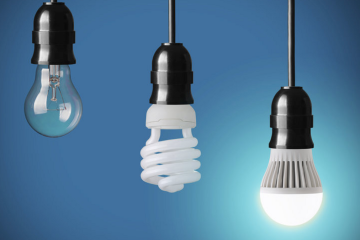7 Best Practices to Enhance Sales Enablement for Maximum Success

A strong sales strategy forms the foundation of a high-performing sales organization. However, incorporating a well-structured sales enablement plan ensures that your strategy aligns seamlessly with business goals, empowering sales teams with the tools, training, and content they need to drive success.

What Is Sales Enablement?
Sales enablement is a strategic approach to equipping sales teams with the knowledge, content, and tools necessary to enhance productivity and close more deals effectively. This process includes ongoing training, seamless access to high-quality content, and performance analysis to optimize results. A well-structured sales enablement strategy continuously evolves to adapt to market changes and organizational needs.How to Build an Effective Sales Enablement Program
Before developing a sales enablement program, assess your existing sales processes, tools, and resources. This evaluation helps identify gaps and opportunities for improvement, ensuring a more comprehensive and effective enablement plan. Focus on these five key pillars:- Content – Ensure that sales teams have access to high-quality, relevant content that they can easily locate, customize, and use at the right moments.
- Training and Coaching – Provide continuous training, onboarding, and skill development to keep sales teams prepared with product knowledge, selling techniques, and effective communication strategies.
- Tools and Technology – Implement tools that integrate with customer relationship management (CRM) systems, automate processes, and enhance sales efficiency.
- Strategy and Execution – Develop a structured approach that reduces ramp-up time for new hires, improves deal closure rates, and enhances forecasting accuracy.
- Measurement – Use data-driven insights to track performance, improve efficiency, and continuously refine the sales enablement process.
Best Practices for Effective Sales Enablement
Implementing the following best practices will help foster an environment that prioritizes efficiency, enhances sales performance, and drives revenue growth.1. Define Business Outcomes and Goals
Start by identifying the key business objectives you want to achieve. Gather input from sales leaders, business stakeholders, and sales representatives to pinpoint focus areas. Consider these questions:- What are the primary sales objectives? (More deals? Increased upsells? Improved retention rates?)
- What challenges do sales teams face?
- Where are sales representatives spending most of their time, and is it aligned with business priorities?
- How effectively is marketing supporting sales through content creation?
- Increasing key performance indicators (KPIs) across the organization
- Addressing and resolving sales challenges
- Streamlining collaboration between marketing, sales, and sales operations
2. Define Buyer Personas and Customer Journeys
Understanding your ideal customer is crucial for successful sales enablement. Research current customers, identify patterns, and group them into distinct buyer personas based on factors such as:- Job roles and responsibilities
- Industry and company size
- Goals, challenges, and key performance indicators
- Demographics (age, education, location)
- Preferred communication methods
- Research habits for discovering new products
- Who they are – Background, demographics, and preferences
- What they need – Goals, challenges, and pain points
- Why they might hesitate – Common objections or concerns
- How to engage them – Messaging strategies, sales scripts, and content recommendations
3. Strengthen Collaboration Between Sales and Marketing
A successful sales enablement strategy requires a strong partnership between sales and marketing. Misalignment between these teams can lead to inefficiencies and lost opportunities. To foster collaboration:- Hold regular meetings to align on messaging, content creation, and customer needs.
- Gather feedback from sales teams on which content resonates most with prospects.
- Ensure sales teams are aware of the latest marketing materials and messaging strategies.
- Use shared platforms to improve visibility into content usage and effectiveness.
4. Develop Content for Every Stage of the Buyer’s Journey
Sales enablement content should be designed to support prospects throughout their decision-making process. Since the buyer’s journey is not always linear, content should be adaptable to evolving customer needs. Map content to these five stages:- Awareness – The prospect becomes aware of a problem and begins researching potential solutions. Content at this stage includes blog articles, infographics, and educational materials.
- Consideration – The buyer evaluates options, comparing different products or services. Offer case studies, product demos, and comparison guides to highlight key differentiators.
- Decision – The prospect is ready to make a purchase but may require internal approval. Provide sales presentations, pricing details, and testimonials to reinforce value.
- Retention – After purchasing, ensure a smooth onboarding experience with user guides, FAQs, and customer support.
- Advocacy – Satisfied customers become brand advocates, sharing positive experiences through referrals and reviews. Encourage engagement with loyalty programs and community forums.
5. Provide Ongoing Sales Training and Coaching
Sales enablement is an ongoing process that requires continuous training and development. To build a high-performing sales team:- Implement structured onboarding programs for new hires.
- Offer regular coaching sessions and skill-building workshops.
- Use real-life sales scenarios, role-playing exercises, and peer-to-peer coaching.
- Document best practices from top-performing sales representatives and integrate them into training programs.
6. Measure and Optimize Sales Enablement Performance
To ensure the success of sales enablement initiatives, track and analyze key performance metrics, such as:- Sales cycle length
- Win rates and deal closure percentages
- Average deal size
- Customer retention rates
- Buyer engagement with sales content
7. Choose the Right Sales Enablement Tools
The right sales enablement tools streamline processes, improve content accessibility, and enhance overall sales performance. When selecting a solution, consider:- Integration with CRM systems
- Automation capabilities for lead management and follow-ups
- Content management and search functionality
- Data analytics and reporting features
- Ease of use and adoption by sales teams














